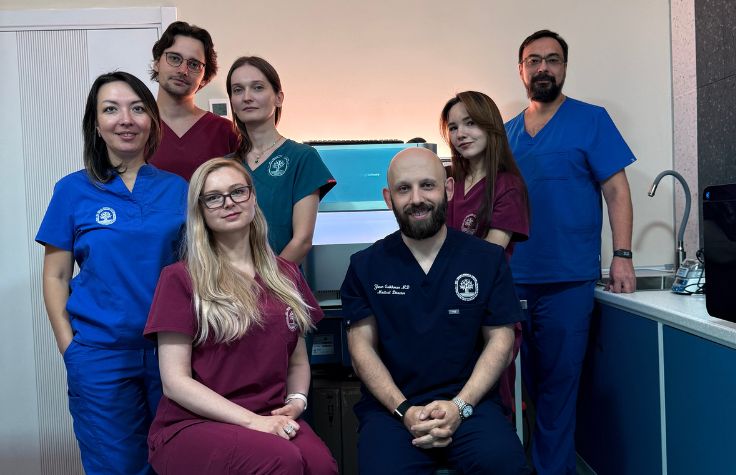
November 25, 2024
When the original MiSeq System launched in 2011, it fulfilled an important position in Illumina’s portfolio of sequencers, and researchers have used it to power genomic discoveries ever since.
New for 2024, Illumina is proud to debut its successors: the MiSeq i100 and MiSeq i100 Plus Systems. These instruments are faster and easier to use than ever before and—representing a first for benchtop sequencers—their reagents can be shipped and stored at room temperature, eliminating the handling and thawing concerns inherent to cold-chain controls.
As part of the final steps to prepare this new product launch, Illumina asked laboratories around the world to test the MiSeq i100 Series for themselves, and discover how its advances might improve their day-to-day operations and even enable growth into new applications.
Three researchers in particular had insights to share: Yannick Marie, operational manager of the Genotyping/Sequencing Platform at the Paris Brain Institute; Christopher Noune, national laboratory operations manager at the Australian Genome Research Facility; and Geneviève DonPierre, team leader of NGS Sequencing at the nonprofit Génome Québec.
Positive feedback on all counts
The first thing all three scientists and their teams noticed was how easily they could get the MiSeq i100 Series up and running. They could unpack and install it themselves without the help of an Illumina representative, and its compact footprint was also a plus. “We can put it anywhere on the bench,” Marie says. “After installation, in one hour we can launch the first run. And it’s beautiful—it’s a really nice instrument.”
Noune agrees, calling it “quite a cute little device. It’s basically a mini NovaSeq X. It’s intuitive and not as complex as other former-generation systems.”
DonPierre foresees the utility other laboratories will find with the MiSeq i100, saying that it’s “accessible to first-time users.” She also identified the gap it could bridge between lower- and higher-throughput systems: “The bigger the instrument, the bigger the output; but sometimes you have small projects and you can’t combine them with bigger ones on a big flow cell. With this new instrument, we are able to provide answers quickly for small projects or for researchers who need fast answers to determine whether or not they should pursue their project.”
Fast answers are where these sequencers truly excel. Genomics services customers have long hoped for the moon shot of same-day reads—and for these time-critical projects, the MiSeq i100 Series has landed. Previously, the Paris Brain Institute had been able to deliver FASTQ data to their customers in around 20 days. Now, Marie says, “we can launch a run in the morning and have the result at the beginning of the afternoon. We’re able to launch a full library prep in one day. It’s a long day, but it’s possible. It’s really a new paradigm for us.”
Sequencing speed had been one of the Australian Genome Research Facility’s top three challenges, as well. But Noune points out several advantages of the new system: “It’s not prone to overclustering; the index-read-first sequencing is a game changer for us in terms of low-diversity libraries. We can start to get demultiplexing stats from the very beginning of the run. With this new system, we can generate high-quality data every single day. It’s probably the fastest sequencer available.”
One of the most impactful changes enabling these improved turnaround times is that all of the MiSeq i100 Series’ consumables and reagents can be shipped and stored at room temperature. “I’ve been waiting for this for years,” DonPierre says. “We don’t have to think two days before to get a kit out of the freezer—the reagents are always ready to use, so you can plan and start a run within the next 15 minutes.”
“We don’t have to deal with more freezer space,” Noune adds. “It lowers our occupational health and safety requirements, because we’re not having to worry about dry ice; the packaging is also really light.”
Do more than you ever thought possible
Each of the researchers who tested the MiSeq i100 Series mentions that the instruments will expand the kinds of applications their lab is able to take on. Marie predicts that the Paris Brain Institute could use the system for single-cell analysis, which they couldn’t necessarily do on systems with larger runs.
Noune believes the sequencers will have a big impact on his team’s microbial profiling and plasmid sequencing services. “Plasmid sequencing has become such an important part of drug discovery,” he says. “A system like this gives us more flexibility; we’re looking forward to seeing how that will open up new opportunities for the Australian Genome Research Facility.”
At Genome Quebec, DonPierre posits that “we would most likely use this new instrument to sequence metagenomic projects. We have researchers who use cell culture or animal research, and they need quick answers—especially for CRISPR—and they cannot wait a few weeks for sequencing data to come back.”
Taking a step back to consider all the benefits of the MiSeq i100 Series, DonPierre sums them up well, saying: “From the self-installation that is quick and easy and doesn’t need an engineer visit on site, to the quick and easy run setup, the reagent storage that doesn’t need to be placed in the freezer, and the DRAGEN server that can generate an analysis report, which is nice for teams that don’t necessarily have a big data analysis team—with this new system, Illumina is making benchtop sequencing accessible for the whole process.” ◆


